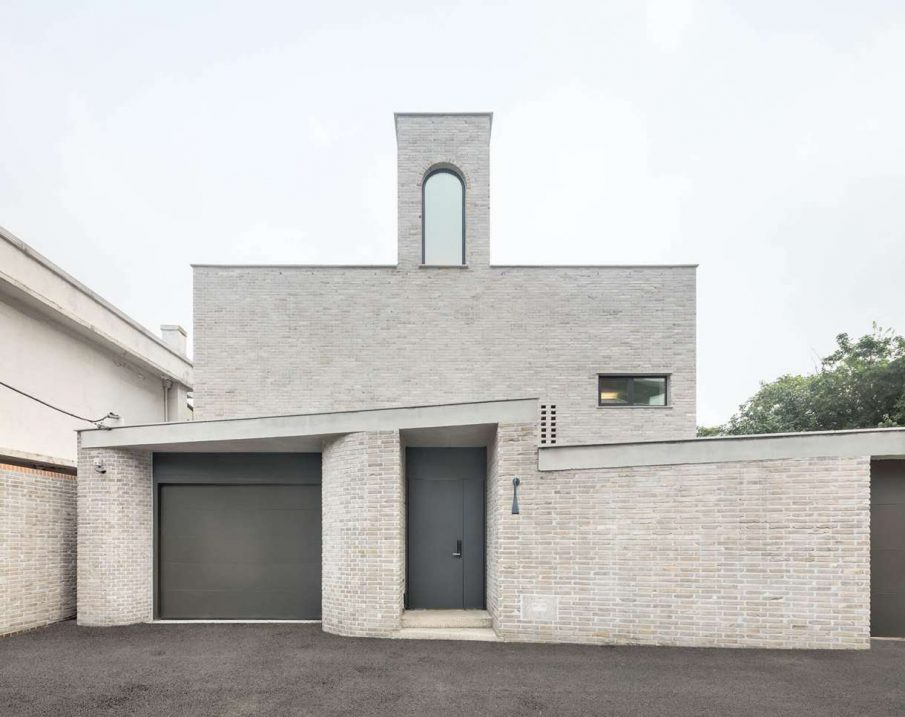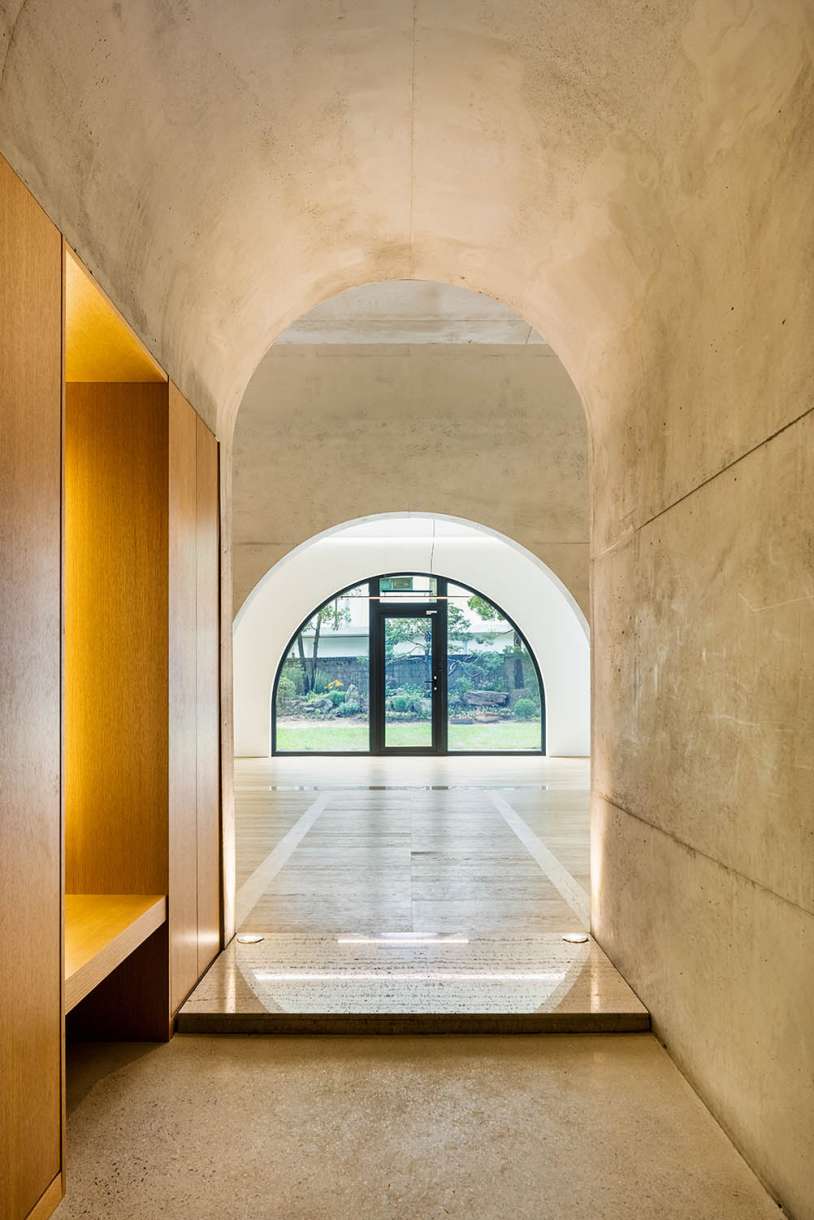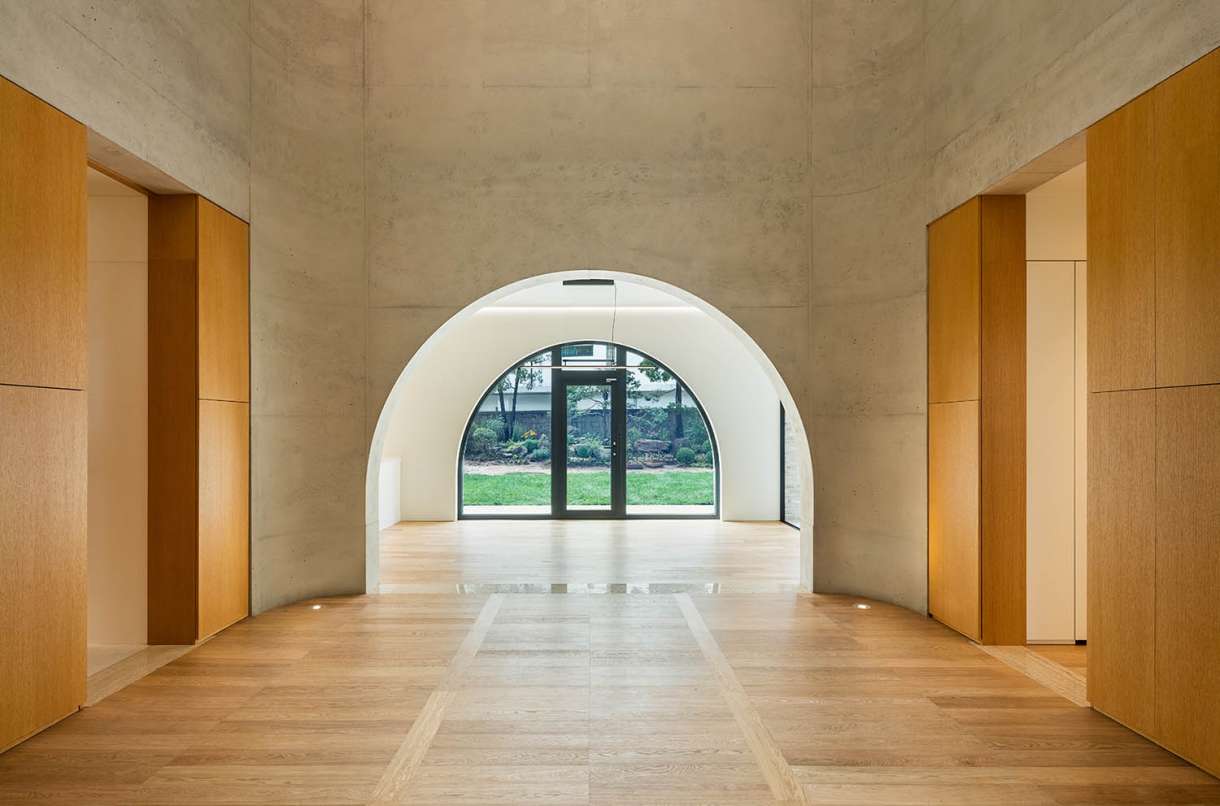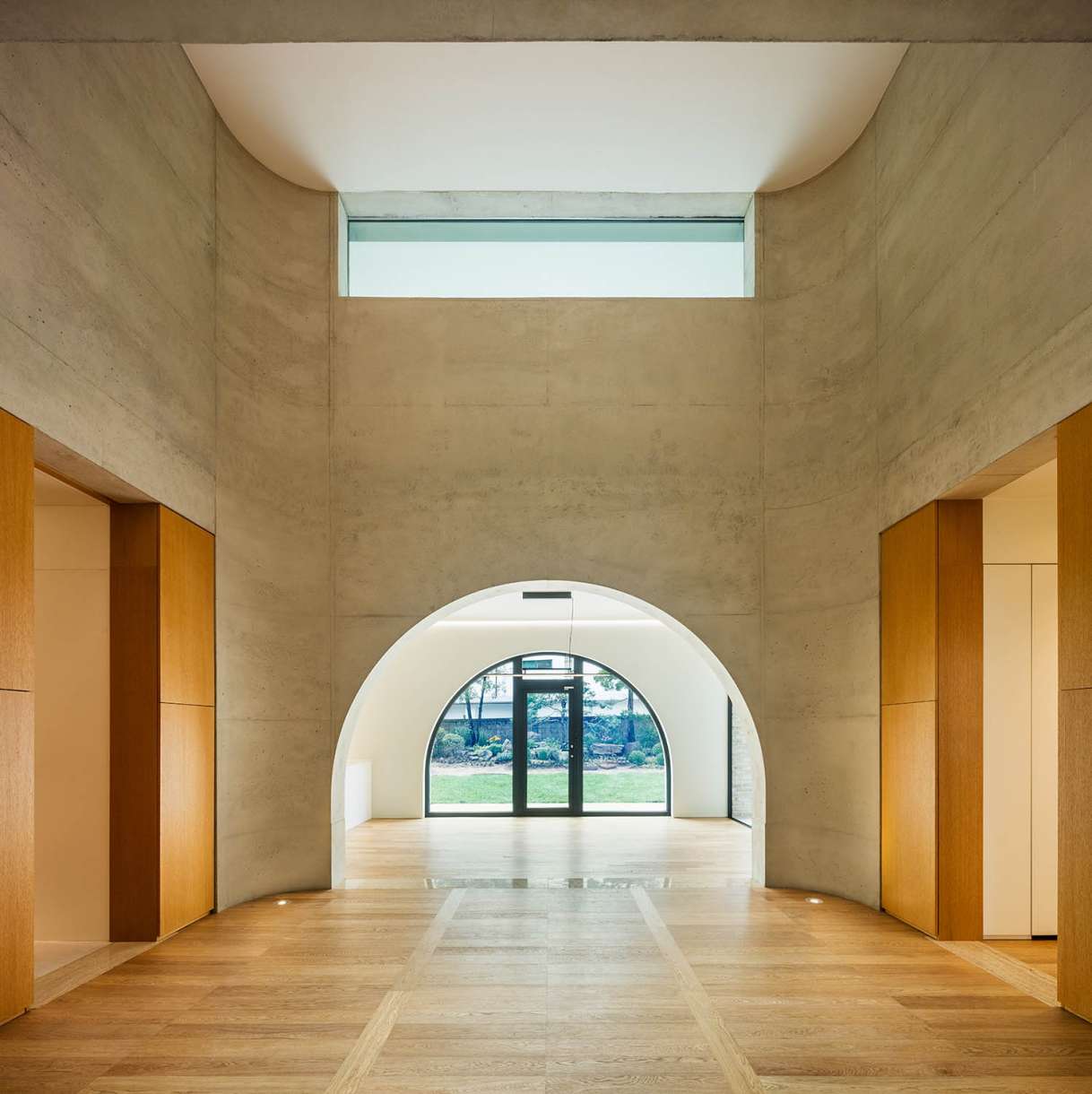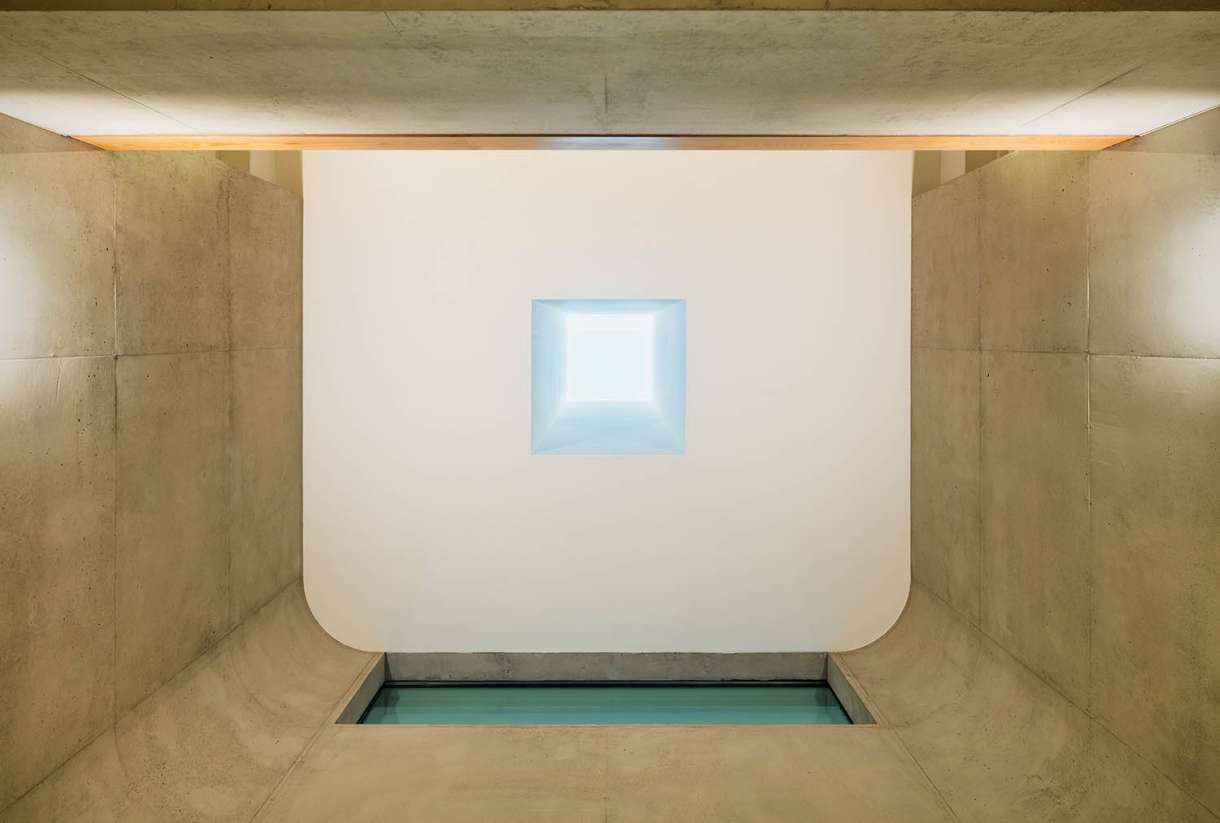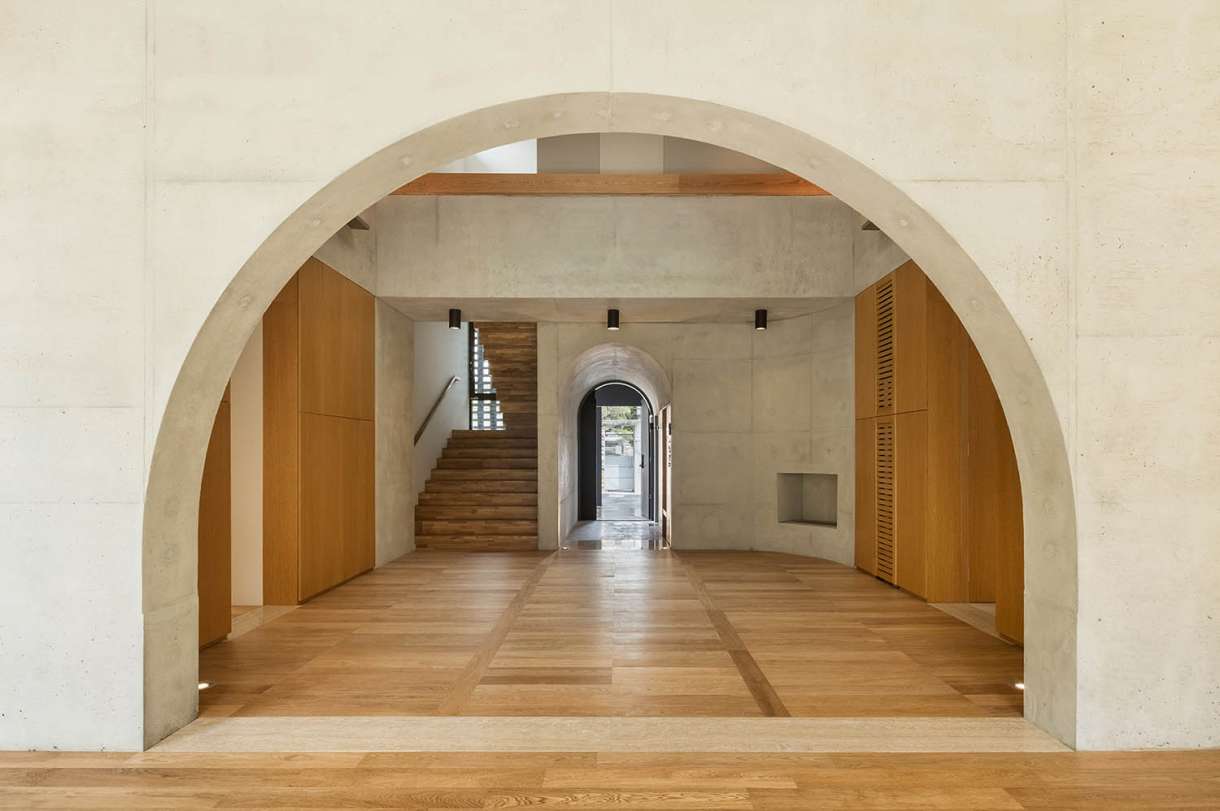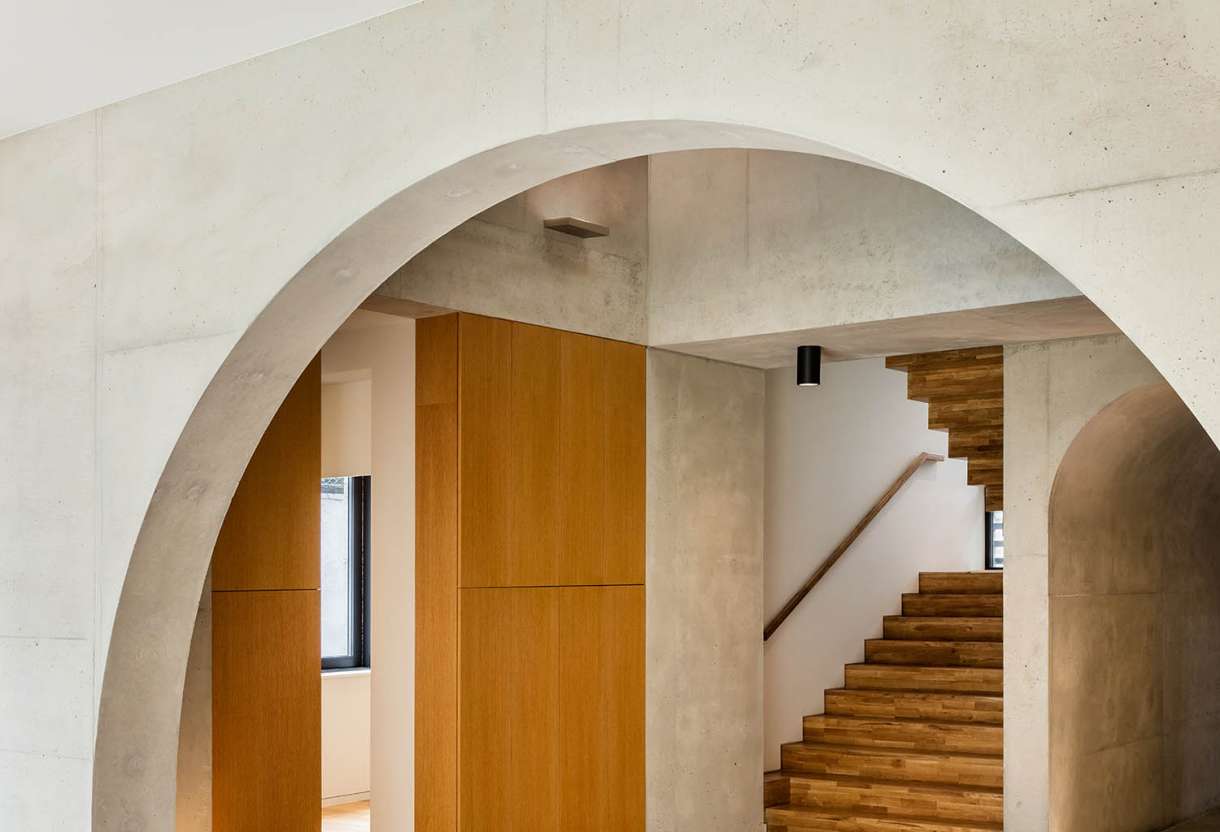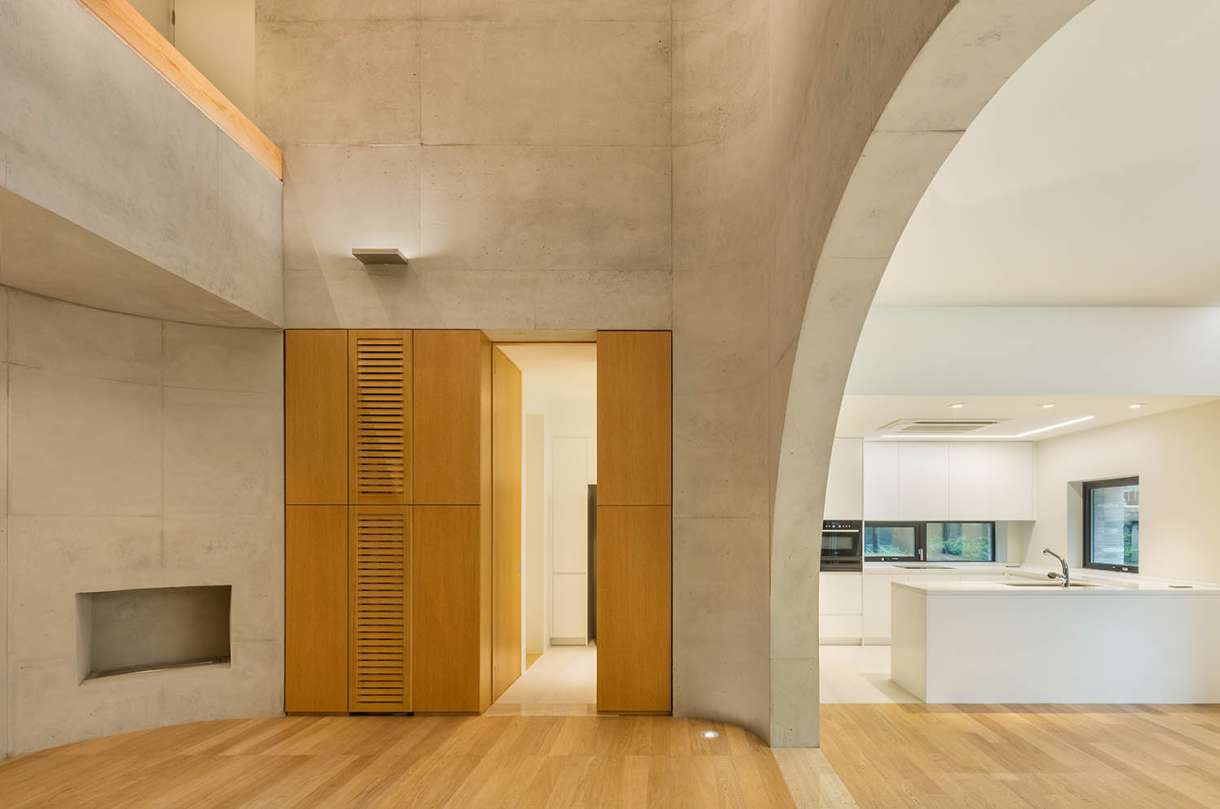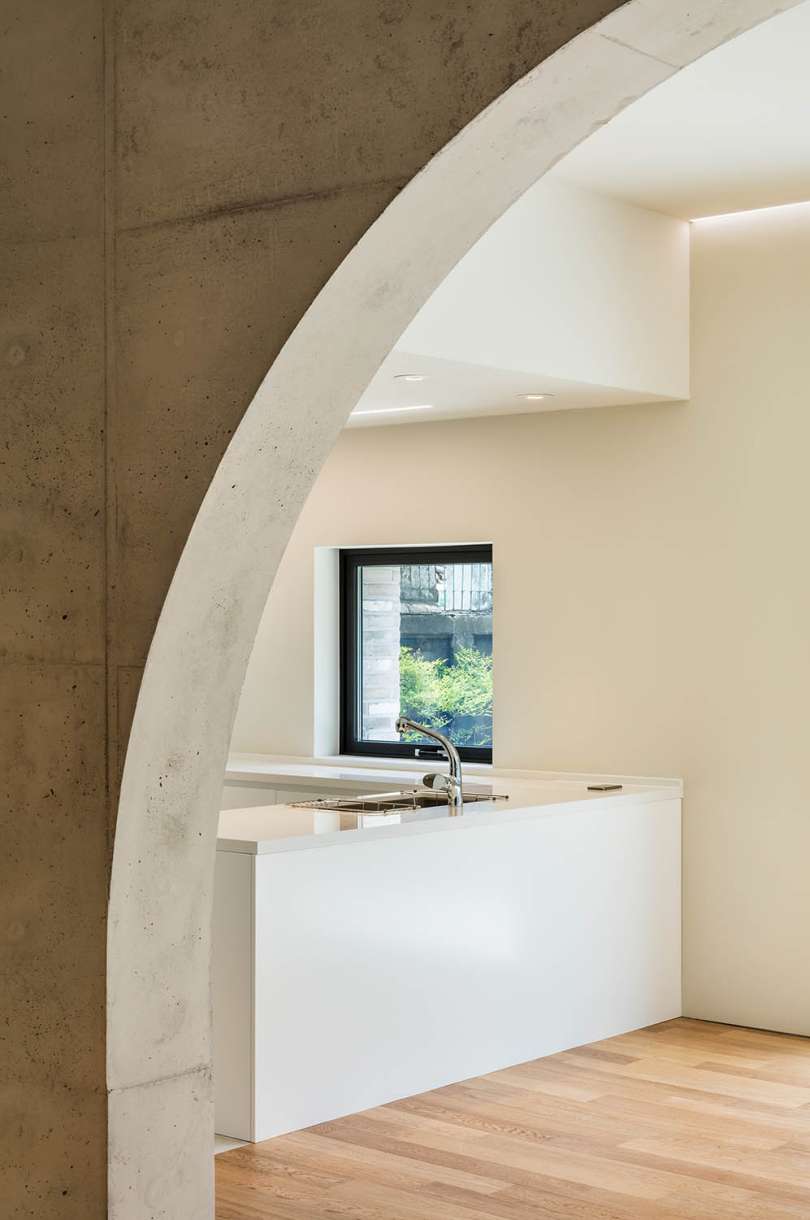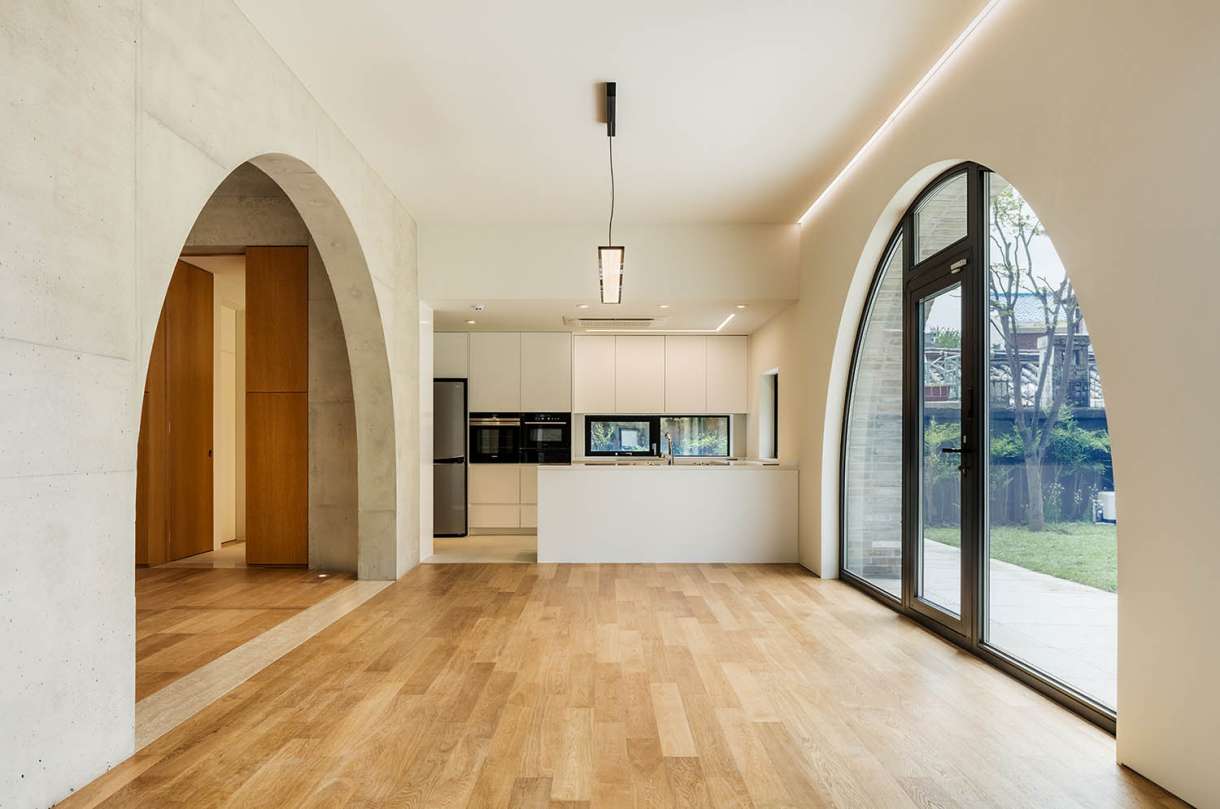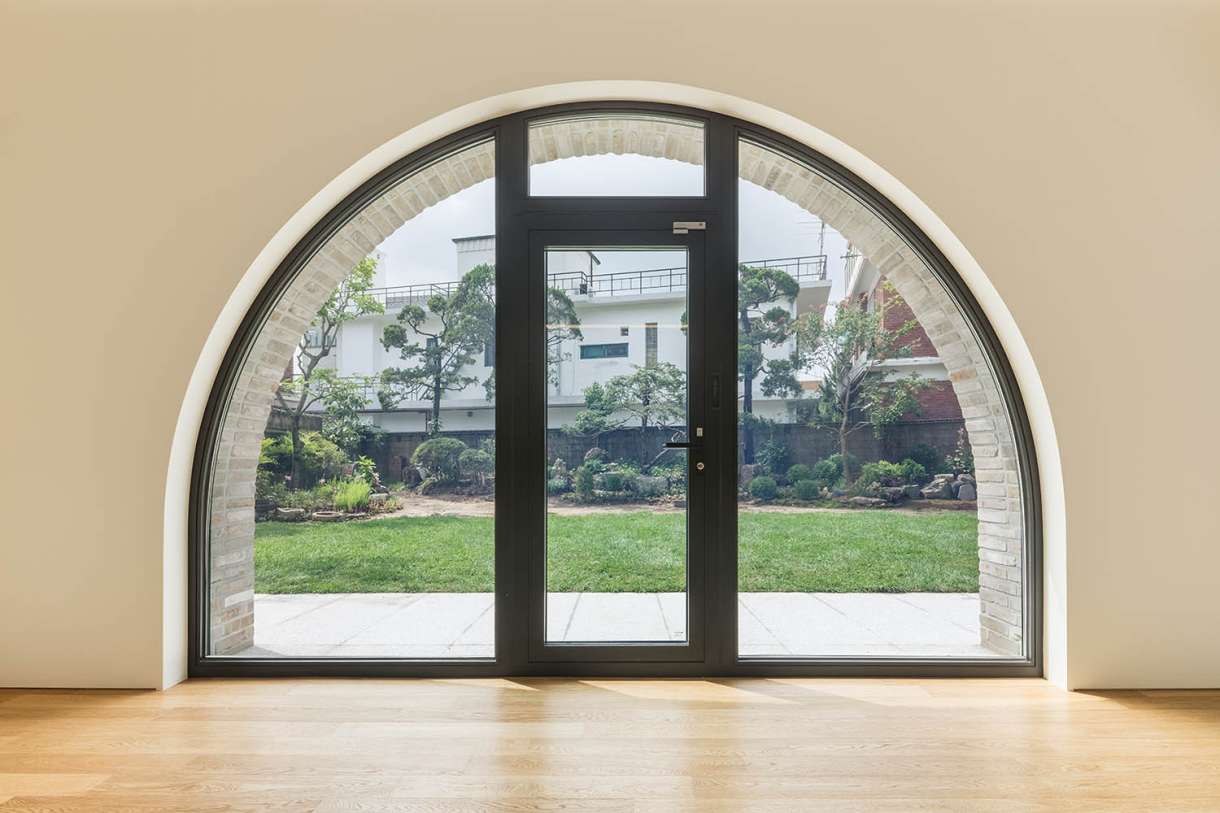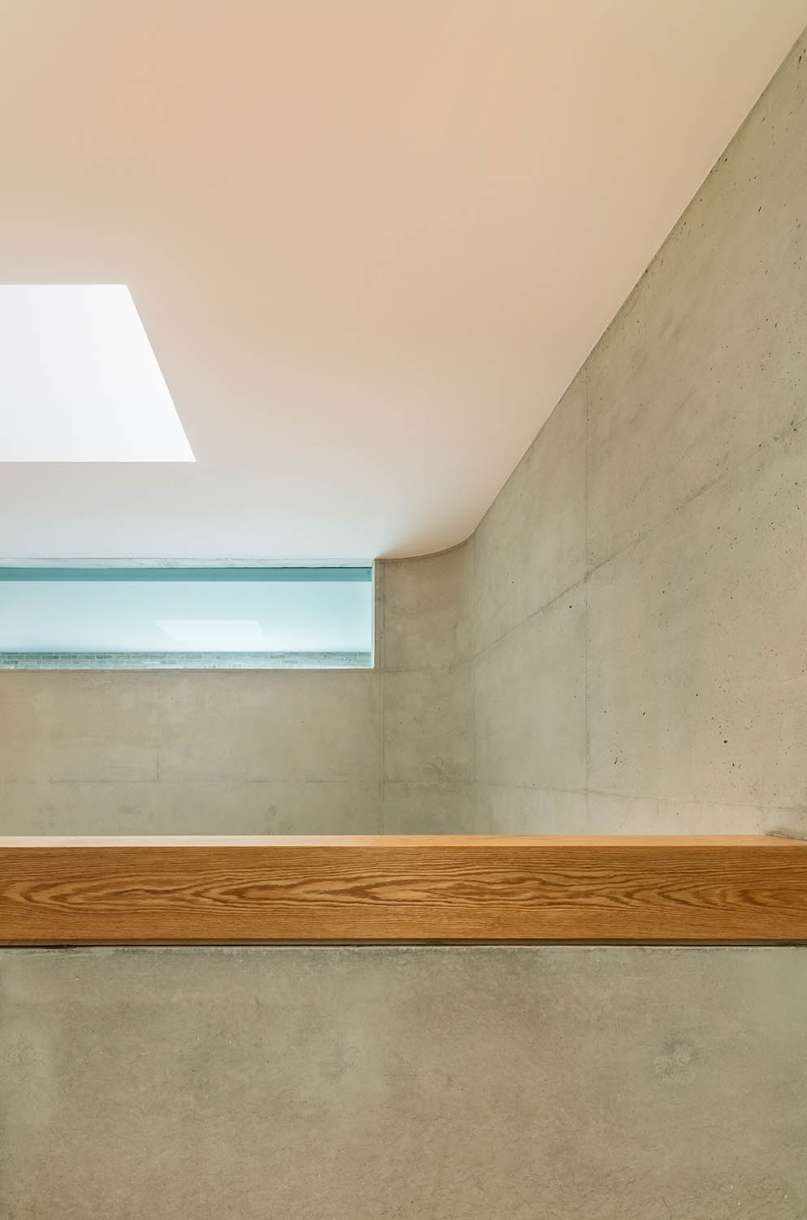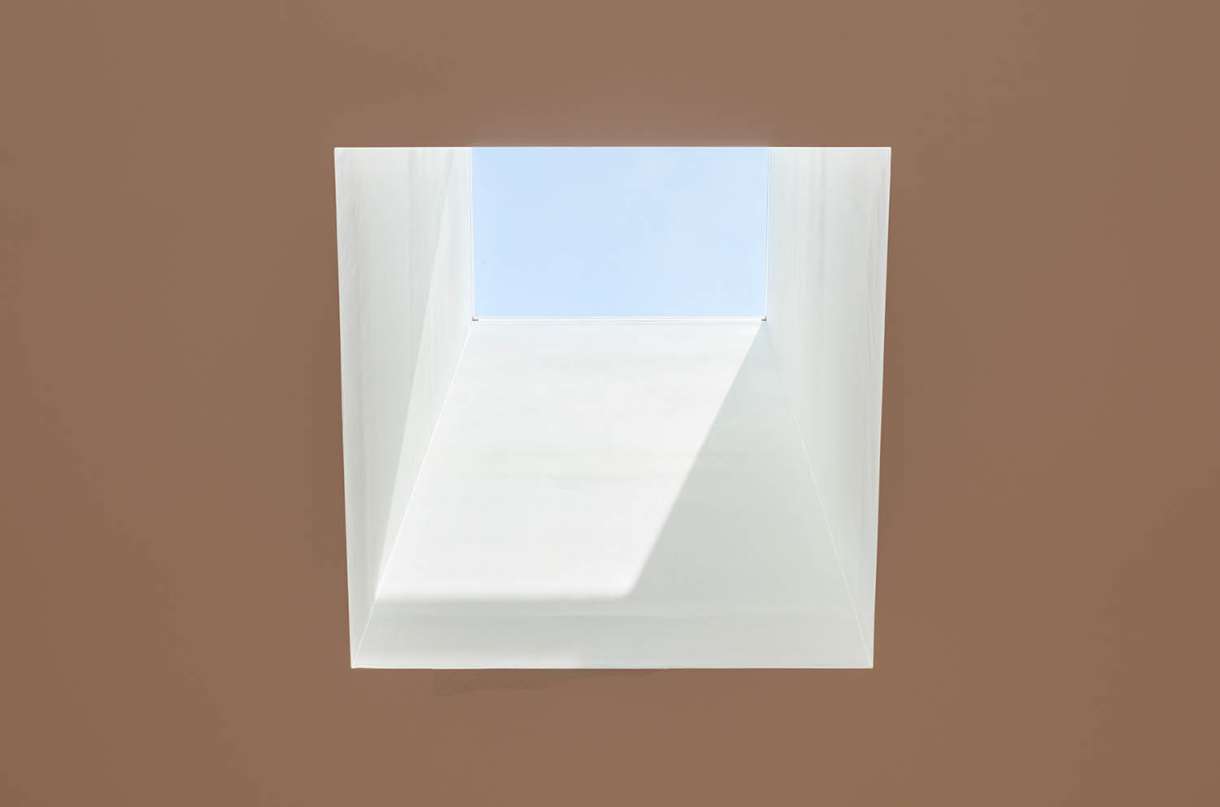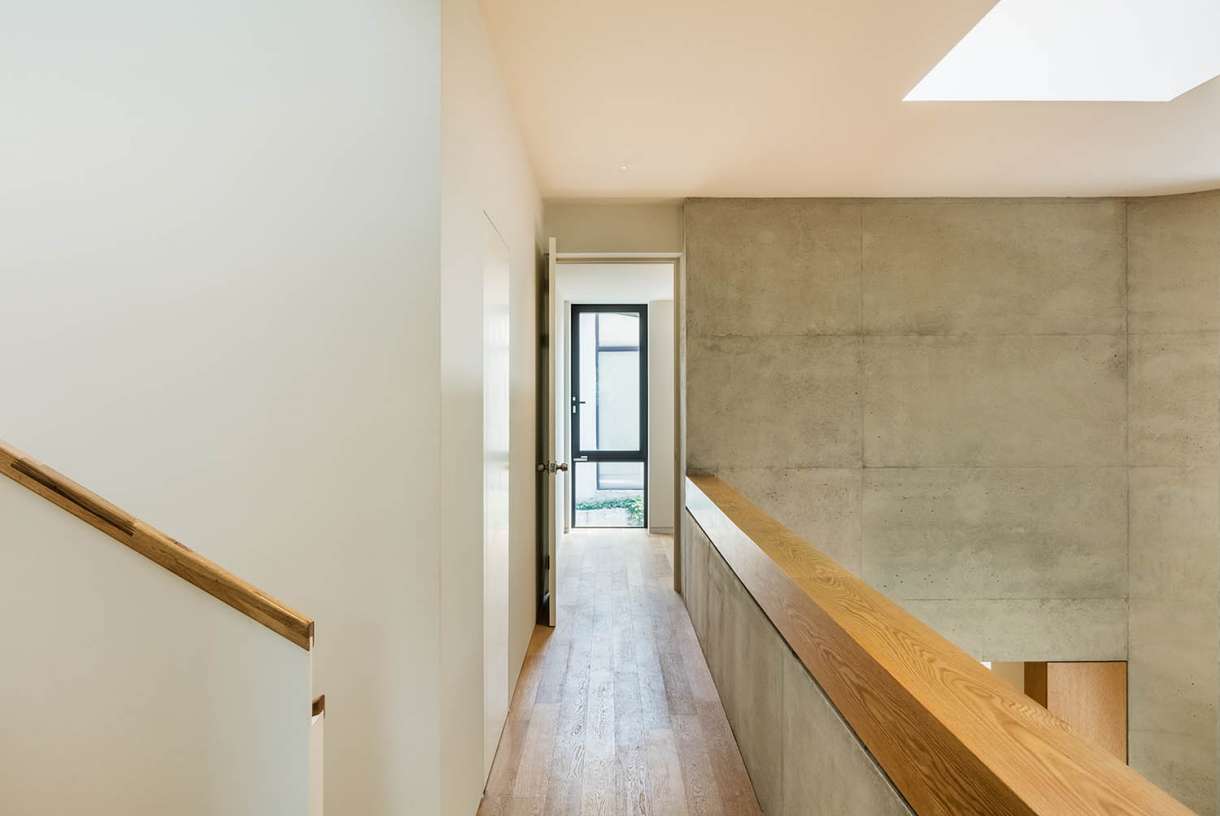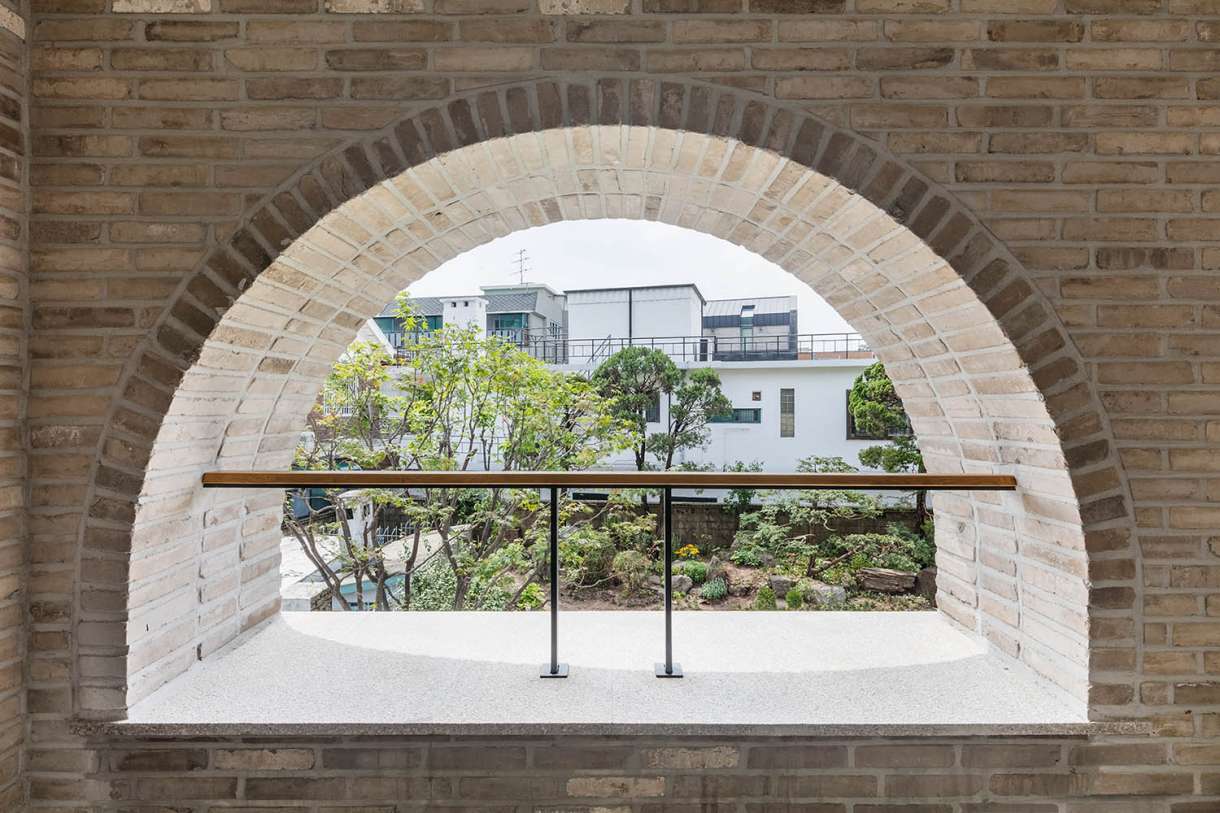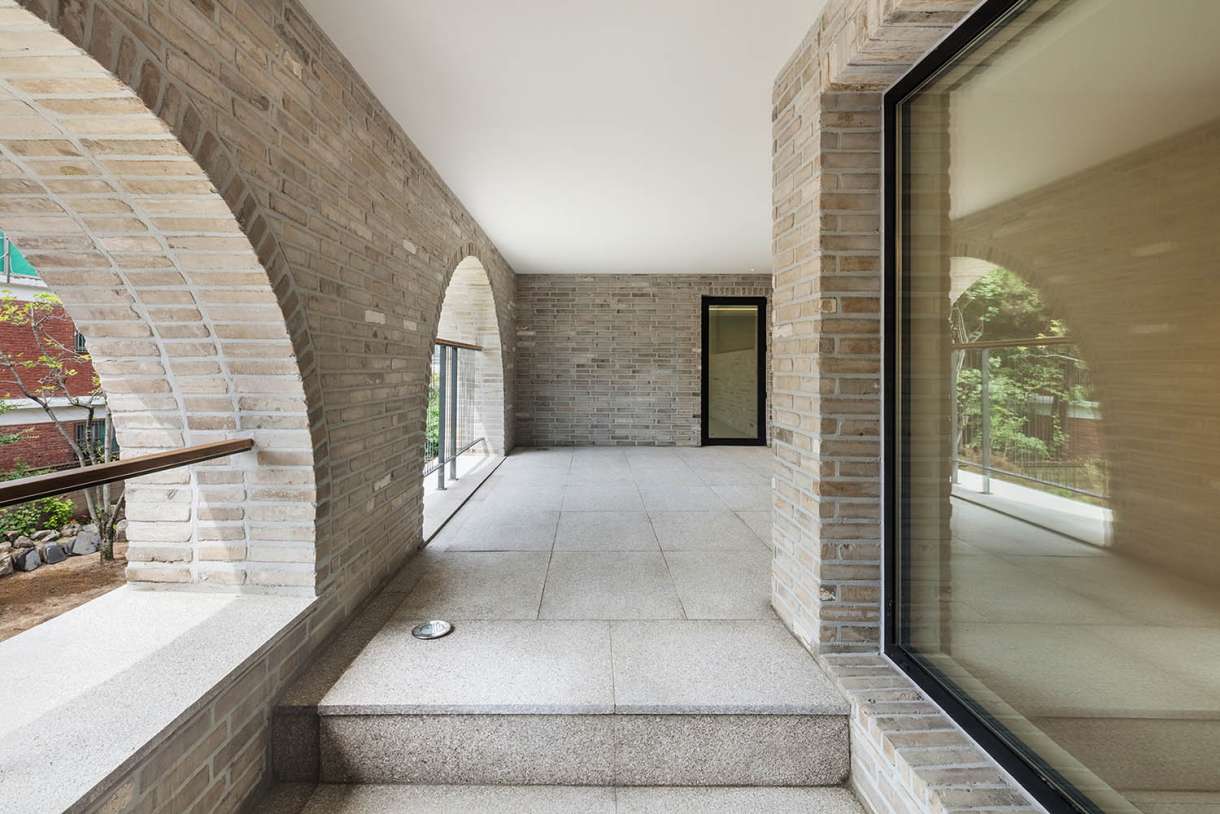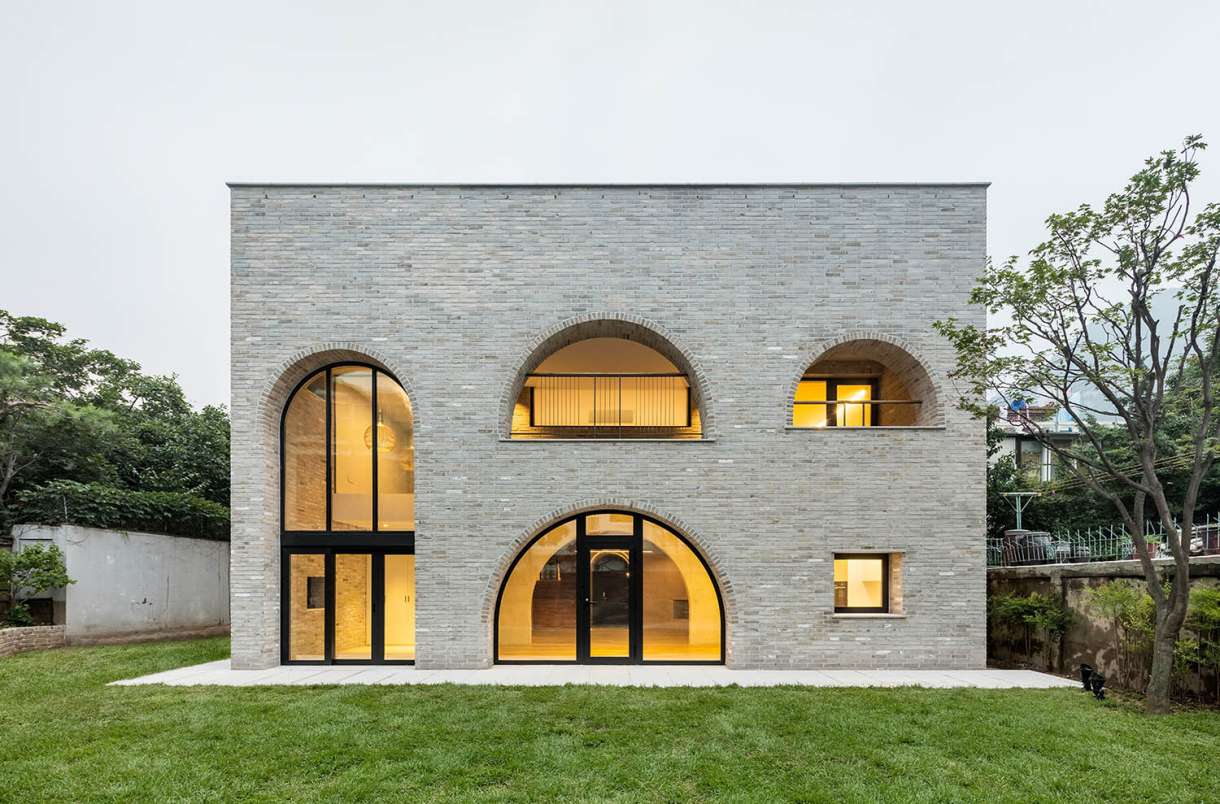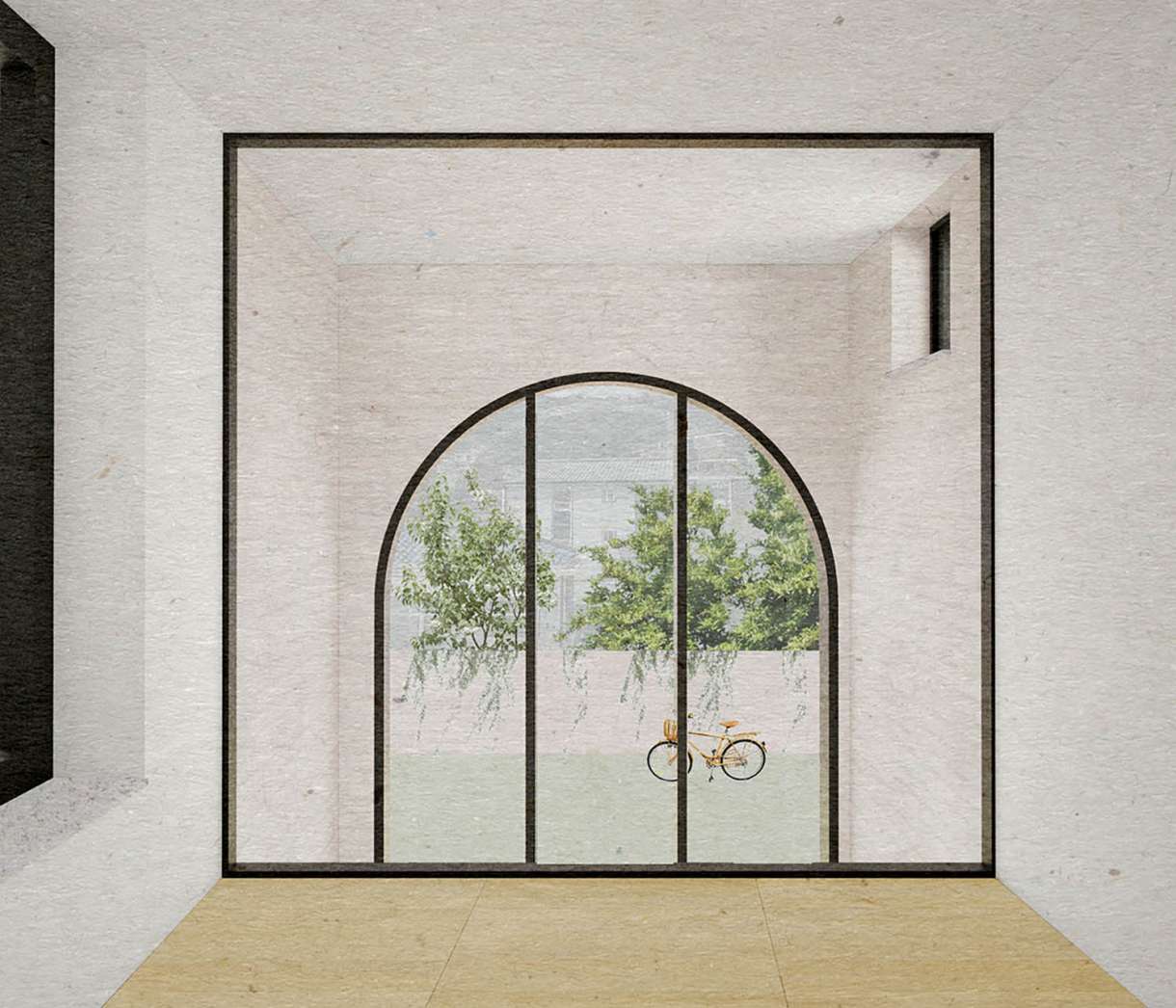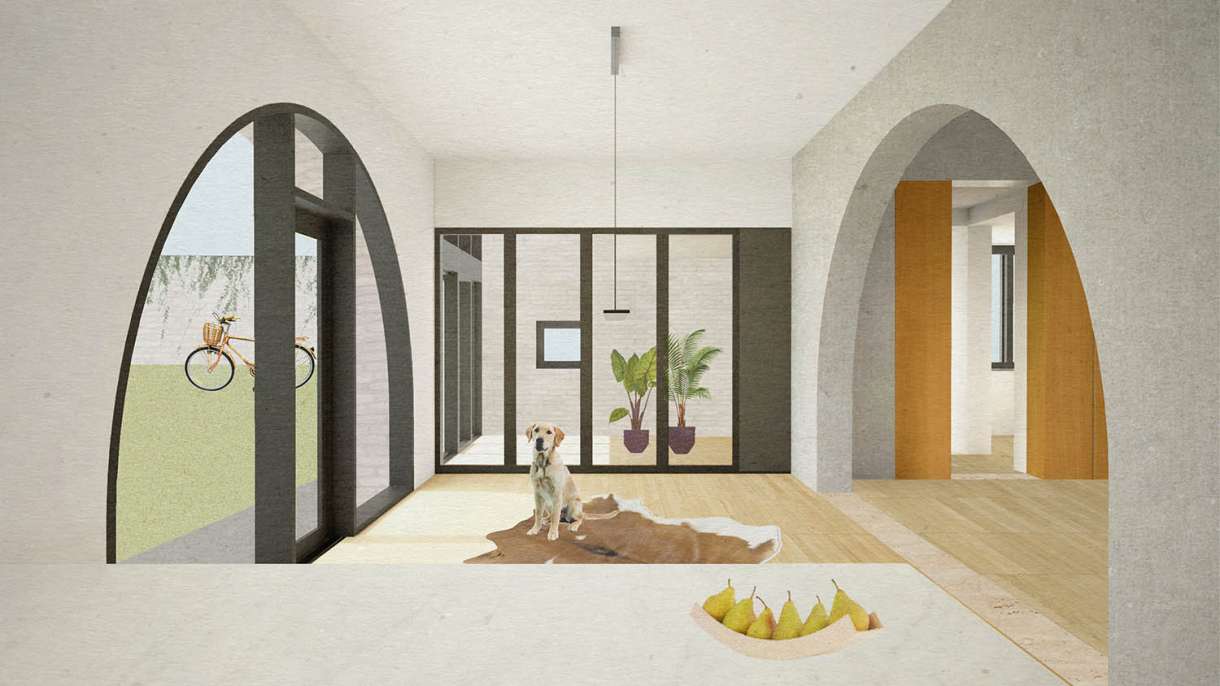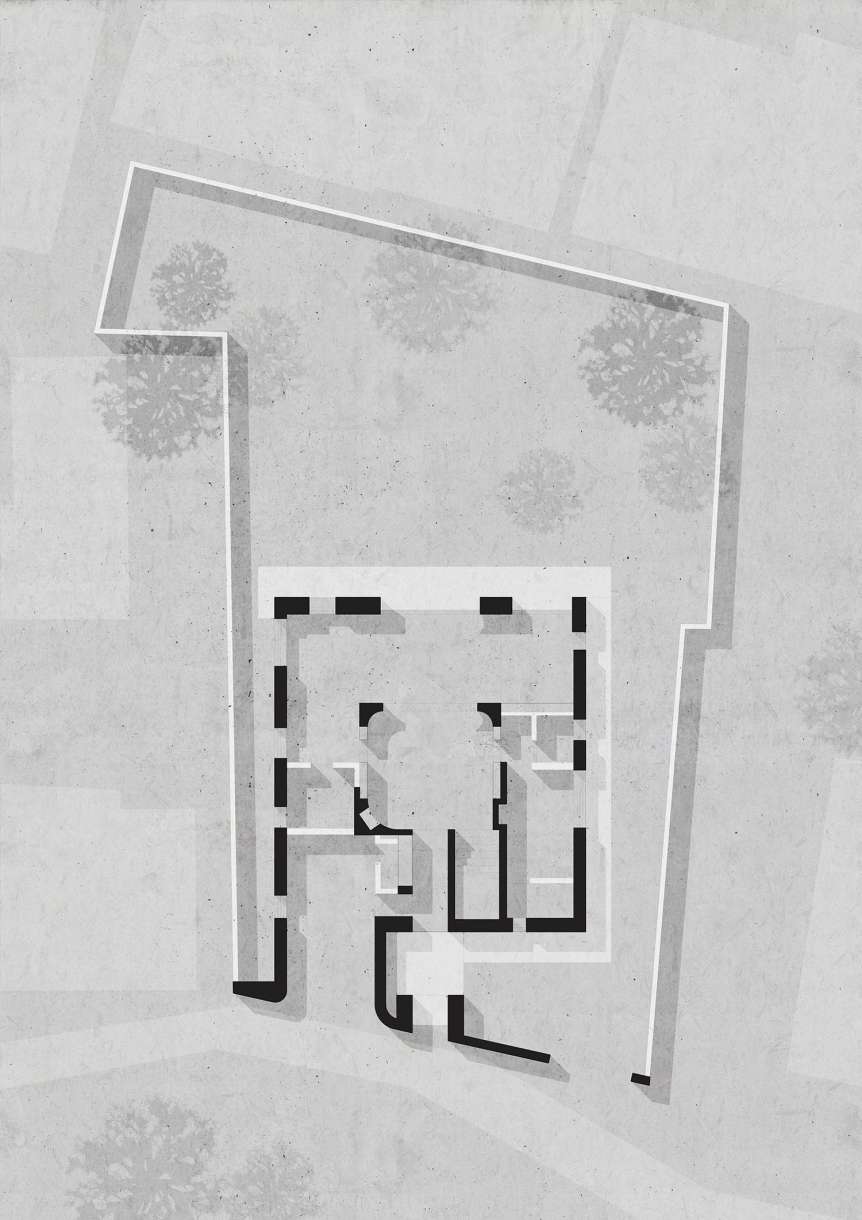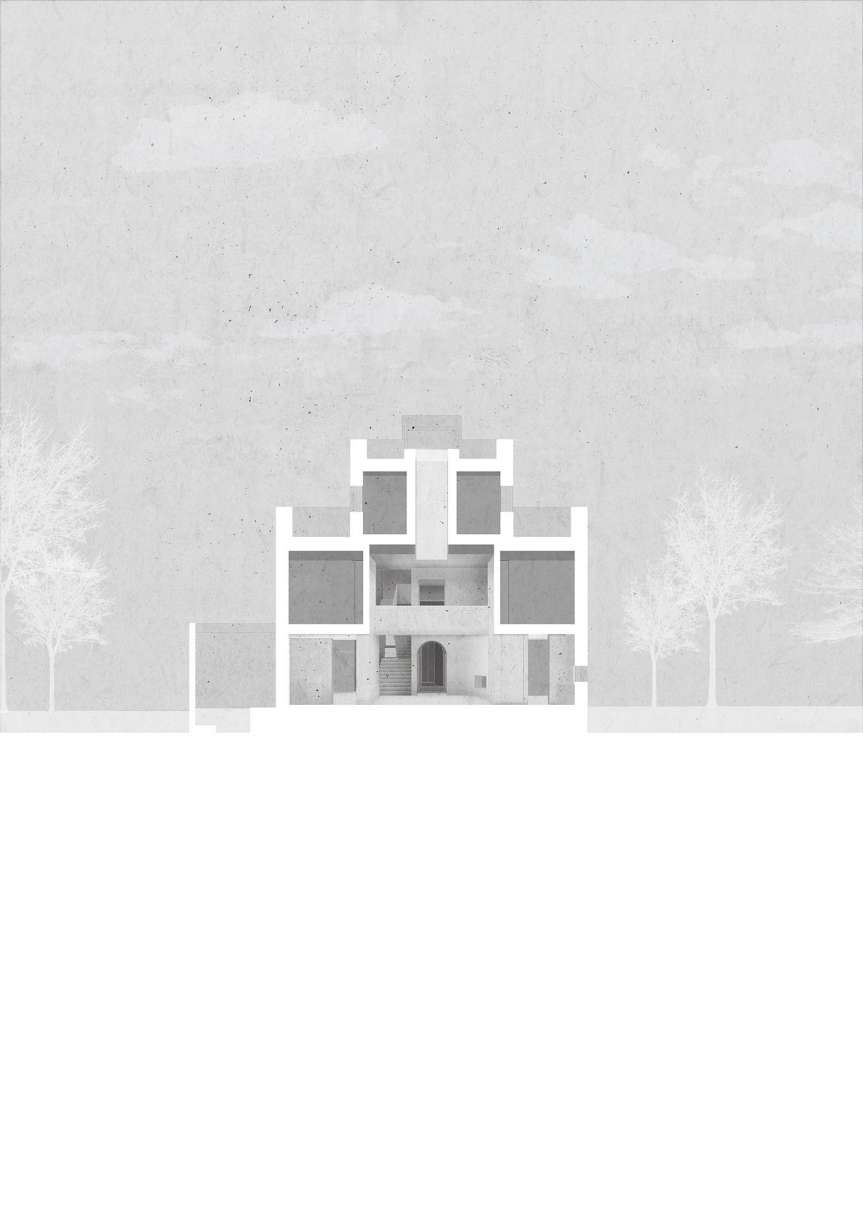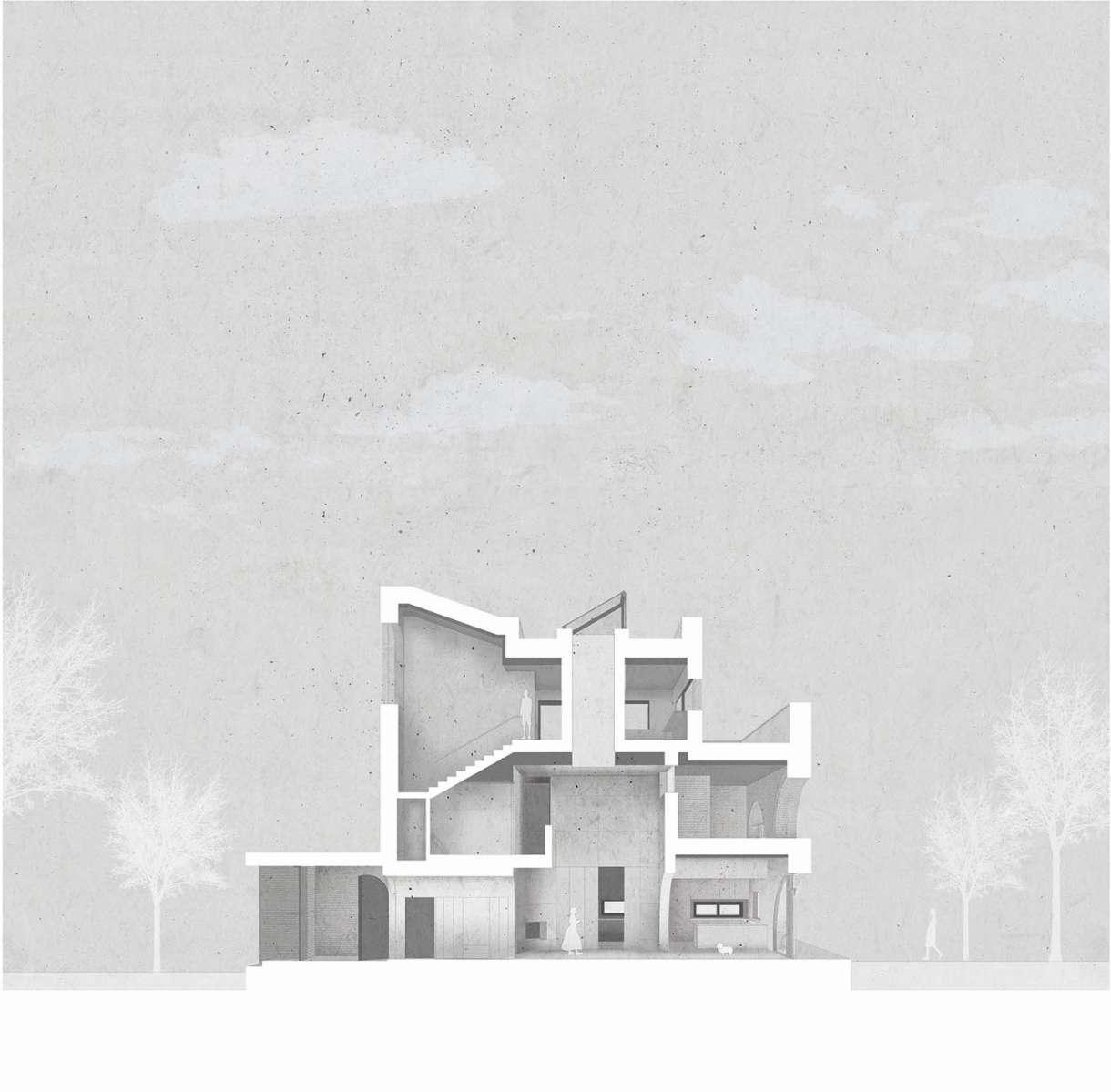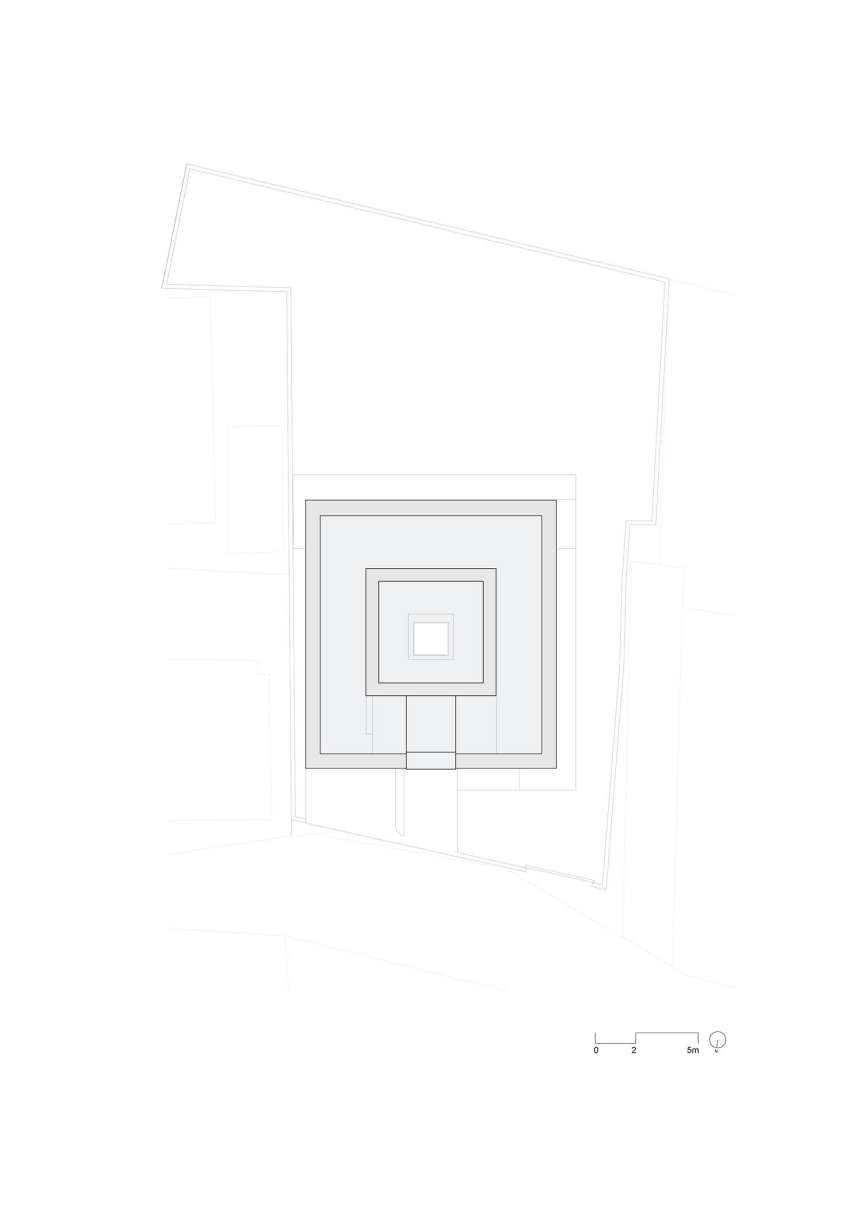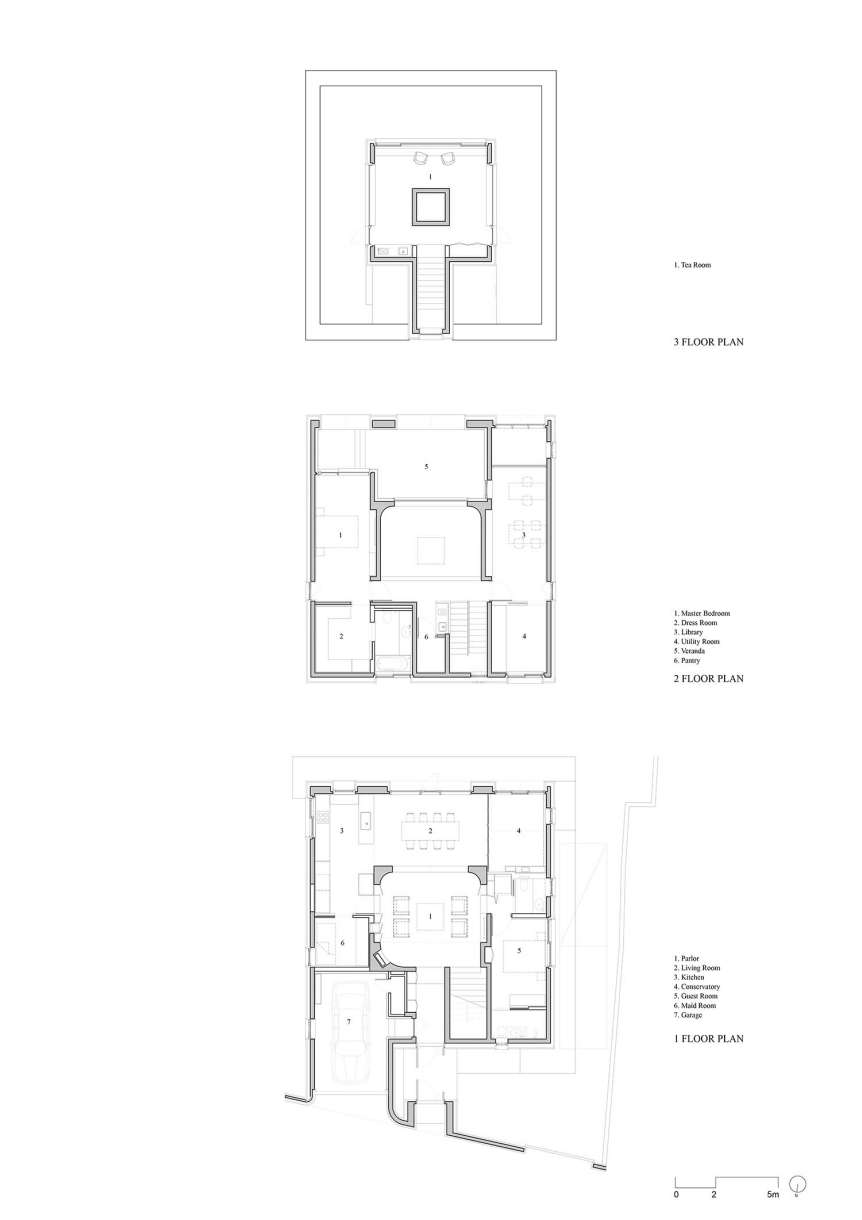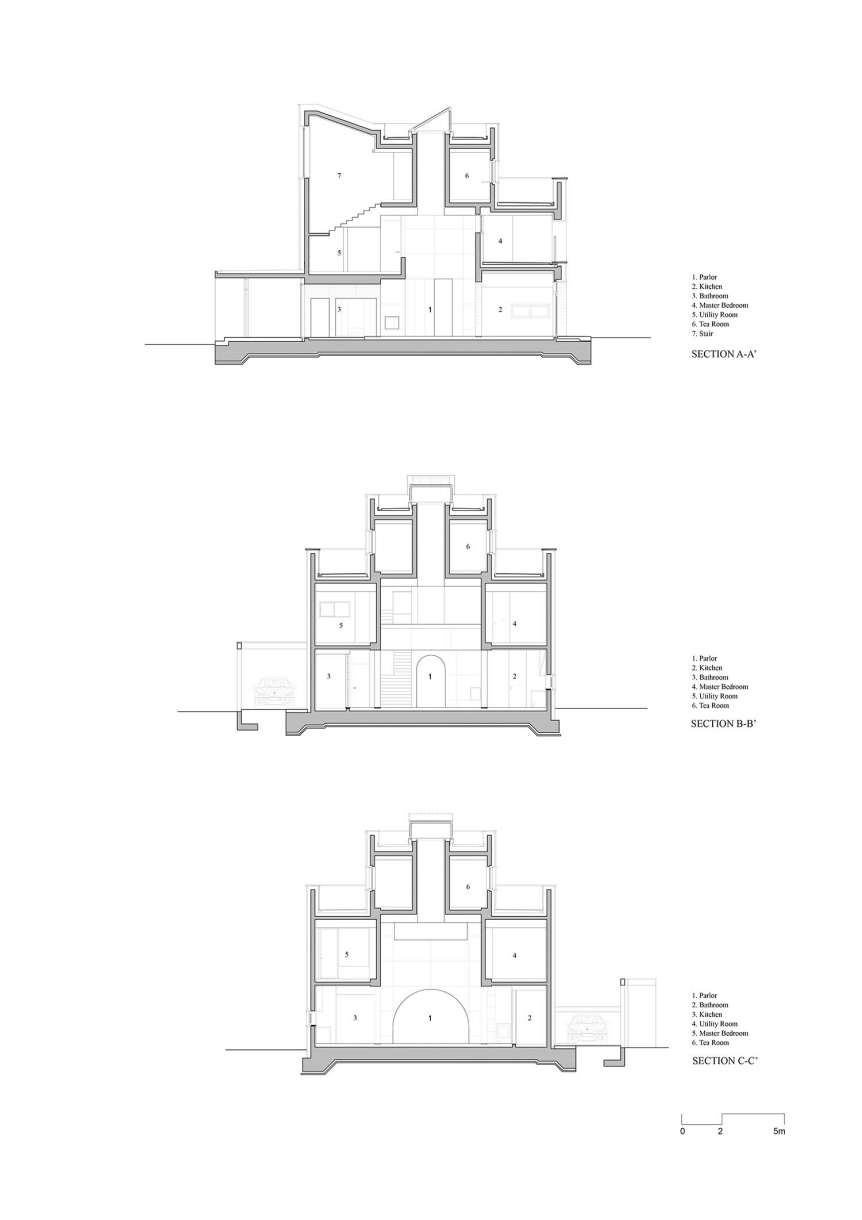글 & 자료. 텍토닉스랩 Tectonics Lab
대지
대지는 인왕산 아랫자락에서 북악산을 바라보는 아늑한 주택가에 위치해 있으며, 역사적 고도의 예스러움과 한국 근현대사의 미완의 정취를 동시에 머금고 있다. 평생 한 길을 걸어온 학자로서의 은퇴를 앞둔 건축주는 50년간 2대에 이어 살던 옛집을 허물고 은퇴 후의 삶을 영위할 편안한 집을 의뢰했다.
Site
Located in a calm low mountainside overlooking the Bugaksan Mountain, the site reflects both the patina and generic modernity of Gwangwhamun, the historic center in Seoul. The client, a retiring professor and honorable scholar, decided to demolish the deteriorating old house and build a new memorable home for post-retirement years.
철거
선친이 직접 지으신 50년 된 주택을 허무는 일은 건축주에게 쉽지 않은 결정이었다. 유년기부터 학창시절, 그리고 학자로서 살아온 모든 삶의 기억을 간직한 옛 집은 건축주에게 기쁨과 평화를 가져다 준 놀이터이자 안식처, 그리고 현재의 인격을 완성시킨 보살핌의 장소였을 것이다. 증개축을 오랫동안 고심했던 건축주는, 쇠락한 집의 구조적 문제를 우려해 신축으로 마음의 결정을 내렸다. 철거는 사흘에 걸쳐 진행되었고 목재 마루널과 격자살 창호 일부, 그리고 선친의 존함이 새겨진 문패는 건축주에게 인도돼 옛 집의 기억을 보존할 수 있도록 했다.
Demolition
It was not an easy decision for the client to demolish the 50 year-old house, built by her own father. The old house accrued character as a a peaceful shelter and joyful childhood playground. After years of hesitation, the client decided to tear down the structurally defective house. After three days of demolition, the remains of the wood flooring, window lattice work, and door plates were transferred to the client to preserve those embedded memories.
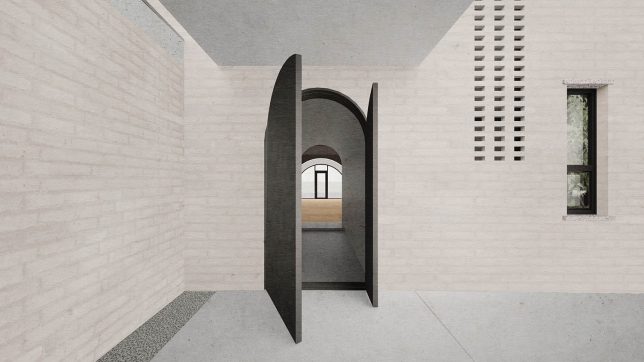
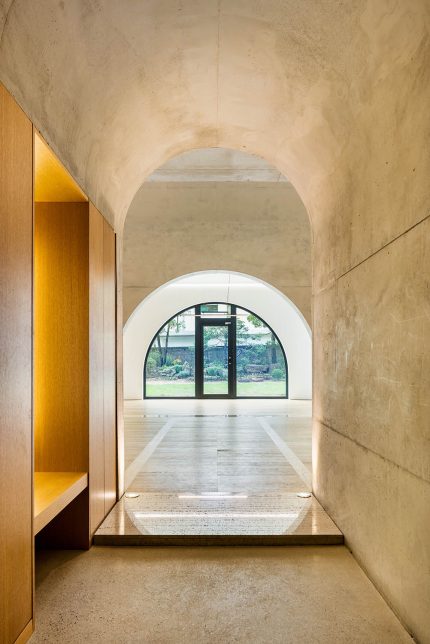
시작
설계의뢰와 함께 건축주로부터 평면스케치 몇 장을 건네 받았다. 얼핏 보면 어린이가 그린듯 한, 스케일이 왜곡되고 공간의 연결이 부자연스러운 그림이었지만, 그 안에는 옛집에 대한 향수와 살고 싶은 ‘집’에 대한 건축주의 많은 생각들이 담겨져 있었다. ‘집’은 건축가의 이상향이나 자아(ego)를 표현하기보다, 건축주의 과거를 기념하고, 현재의 삶을 담아내며, 미래의 희망을 꿈꾸는 공간이기에 건축주가 그린 그림에 질서를 부여하는 일이 건축가의 역할이라 생각했다.
Beginning
A few plan sketches were provided by the client at the start of the commission. The naive unprofessional drawings, out of scale with distorted proportions, represented the subtle yet detailed thoughts about a new home filled with the nostalgia of the old house. A house is not a space for an architect’s egoistic expression, but a place for commemorating yesterday, living the present, and dreaming of tomorrow. Thus, the architect’s role seemed to impose an order on the client’s drawings with respect and honor.



질서
청운동 주택의 기본 공간구조는 대칭적 질서와 중심형 공간의 원형인 3칸 x 3칸으로 설정했다. 이는 한국에서 전통 전각 건축의 대표적인 유형이었으며, 서구 문명에서는 ‘나인스퀘어 그리드(nine-square grid)’라는 개념으로 르네상스 전후에 유형학적으로 정착된, 보편적인 공간구조이다. 3칸 x 3칸의 간소한 형태 다이어그램으로 시작된 설계는 집이 갖추어야 할 기능들의 수용과 함께 실질적인 삶을 담아낼 수 있는 구체적인 공간 구조로 발전되었다. 퇴임 후에도 학자로서 제 2의 인생을 꿈꾸는 건축주에게 사적인 공간의 집은 동시에 공적인 공간으로도 기능할 것이다. 가장 중심에 위치한 응접실은 가장 공적인 공간이며, 내부에 위치한 기능 공간들에 수평적으로 그리고 수직적으로 평온한 질서를 부여하는 역할을 한다. 1층의 응접실 공간은 2층의 보이드 공간과 3층의 빛우물 공간으로 이어져 중심공간을 따뜻한 빛으로 물들이며, 깊고 차분한 공기의 흐름을 이끌어낸다.
Order
The nine-square grid, 3 kahn x 3 kahn in East Asia, has been a fundamental typology in architecture, both traditional and modern. The parti of the Cheongun Residence was structured as nine-square grid in its spatial conception with symmetry and centricity. Conceptualized as modest but abstract ideal space, the nine-square grid diagram was developed into a concrete spatial structure with programs and functions. Cheongun Residence is planned to function both as private residence and as research institute. The parlor at the core of the nine-square grid integrates programmatic functionality with spatial spirituality. The void of the parlor continues through the mezzanine of second floor to arrive at the light well of the roof, imbuing warm natural light and tranquil air deep into the center of the residence.





중심형 공간
3칸 x 3칸의 유형이 평면적으로, 그리고 단면적으로 적용된 9칸의 정육면체를 근간으로 해 공간구조를 발전시켰다. 정 중앙에 위치한 보이드 공간을 그 축으로 하는 중심형 공간은 공적인 영역을 구심형으로 집중시키는 동시에 사적인 영역을 원심형으로 흐트려 내부 공간의 밀도를 조화롭게 유지시키는 역할을 한다. 1층의 응접실은 부엌을 비롯한 서비스 공간과 게스트룸의 중심을 잡아주고, 거실 및 온실, 그리고 옥외 정원으로 이어지며 공간의 긴장을 완화하는 동선의 리듬을 만들어낸다. 2층의 보이드 공간은 집의 중심에 위치해 빛우물을 통해 유입되는 천공의 에너지를 머금고 실내의 가장 깊숙한 곳까지 차분한 호흡으로 전달한다. 또 좌측의 침실영역과 우측 서재영역 사이의 대칭적 질서를 통해 개인의 삶과 학자로서의 사명 사이에 균형과 조화를 부여한다. 3층의 빛우물은 다실의 정 중앙에 위치하고 다실은 3층 옥외공간의 정 가운데에 위치해 중심형 구성을 완결시킨다. 다실에서는 빛우물 벽에 의해 만들어지는 공간의 압축과 조망창에 의해 원경으로 확산되는 공간의 이완이 조화롭게 공존하며 공간의 시적 감응을 이끌어낸다.
Centralized Organization
The nine-square grid was applied horizontally in plan and vertically in section as regulating geometry. The void space at the core centers an axis that compresses the public realm into the center while disseminating private space to the periphery. The spatial density is maintained in equilibrium by this centralized organization, both centripetal and centrifugal. The parlor between the kitchen area and the guest room on the ground floor maintains the balance between servant and served space. The circulation from the foyer to the rooftop tearoom occurs through the central void space, to generate rhythmic sequences compressing and releasing spatial tensions. The void on the second floor mediates between personal life and scholarly life via the symmetrical order between the master bedroom and library. The light well on the third floor is situated at the concentric center of tearoom, the centroid of the third floor plan. This tea room has a concentric square geometry in plan and section that becomes the spatial, iconographic centricity of the house. The compression of the space by the solid light well tube harmonizes with the spatial release through the horizontal windows.



재료와 형태
한 평생 학자로서의 외길을 걸어온 건축주에게 중심형 공간구조의 집은 디자인적인 옵션이 아니라 그의 삶을 담아내는 본질적인 형태에 가까울 것이다. 견고하고 한결같지만 그 안에 부드러움을 지닌 중심형 공간을 구현하기 위한 재료가 콘크리트로 귀결된 것도 역시 필연적으로 느껴졌다. 강건한 중심성과 조화로운 대비를 이루는 부드러운 인상을 표현하는 재료는 고벽돌이었다. 집을 외부 환경으로부터 보호하는 벽과 온실, 2층 베란다의 표면은 모두 고벽돌로 이뤄져 세월의 흐름과 함께 고색창연한 기품을 더해갈 것이다.
Material and Form
For a scholar dedicated to education and research, centralized organization of the house represents the essentiality and directionality of life. Concrete, calm, and enduring patina materials were selected for the central structure. Brick becomes the counterpart for the exterior cladding, balancing the tranquility with warm vitality and subtle rhythms. Recycled bricks were used as wall cladding for the exterior walls, conservatory area, and veranda to mediate the transition between exterior and interior.



건축주를 위한 집에 대한 개념적인 생각들은 콘크리트와 벽돌의 재료적 물성에 대한 존중과 함께 ‘아치(arch)’라는 구체적인 건축형태로 발현되었다. 아치는 현관에서 ‘볼트(vault)’의 형태로 동선 흐름의 궤적과 함께하며 응접실에서는 거실로 연결되는 공간의 확장을 걸러 아늑한 중심형 공간을 잡아주는 역할을 한다. 거실과 온실, 그리고 베란다의 아치는 남측정원의 조경을 담아내는 프레임이며, 강렬한 태양과 몰아치는 비바람으로부터 집의 중심을 보호하는 공간의 켜로서 기능한다. 도시적 맥락에서, 청운동 주택은 경복궁과 광화문, 그리고 중명전 등 주요 사적과 근현대건축문화가 공존하는 지역에 위치한다. 아치는 과거의 역사적 이미지와 현재 도시의 체험적 이미지를 단절없이 이어주며 재료의 물성에 대한 집단적 기억을 보존하는 은유적 상징일 수 있다.
To deal with the spiritual aspect of materiality, the arch was chosen as the conceptual and structural technique. An arch in a form of a vault guides visitors through the foyer to the parlor. At the central void of parlor and living room, two consecutive arches add a series of filters to maintain a temperate and calm atmosphere. Arches of the living room, conservatory, and veranda frame the garden landscape and protect the central space from the harsh weather. The Cheongun Residence is located in the most historic district of Seoul, which involves the paradoxical coexistence of traditional, colonial, and contemporary architectural scenes. An arch may be the metaphoric interpretation of coexistence, preserving collective memories of the neighborhood’s patinated materiality.


중심형 공간과 대칭적 질서, 그리고 대지의 환경적 요인으로 인해 집은 명확한 정면성의 원리를 보여주는 외관을 갖게 되었다. 북측 진입로에서 기단으로 인지되는 담장은 대문을 중심으로 좌측에 실내주차장 입구와 조금 떨어진 우측에 실외주차장 입구를 가지고 있어 집이 지니는 대칭적 구성을 암시하고 있다. 담장에서 조금 떨어져 위치한 집의 북측 입면은 1층의 정 중앙에 위치한 현관 아치에서 시작해 3층 계단실의 아치창으로 이어지는 수직축을 중심으로 한 대칭적 구성을 가지고 있다. 정원을 바라보는 집의 남측 입면 또한 1층 거실의 아치창과 2층 베란다 아치를 중심축으로 하는 대칭적 구조를 가진다. 집의 외관은 내부 중심형 공간의 질서와 프로그램적 균형에 의해 발현되는 것이다. 이는 집이 지니는 기능적인 복합성과 대지에 기인한 대립성에 대응해 절대적이고 경직된 대칭이 아닌, 상대적이고 편안한 대칭적 균형에 이르게 된다.
The frontality of the Cheongun Residence arises from the centralized organization, symmetric order, and contextual relationships of the house. The north wall of the house, perceived as podium, includes the rhythmic and symmetrical placement of a canopied porch and two vehicle entrances. The symmetricity becomes obvious at the receded north elevation, with a central axis between the main entrance and the arch window of the staircase on top. The south elevation facing the main garden has a semi-symmetrical order with a series of arch windows. The frontality and symmetricity of the house is a clear manifestation of the centralized organization and proportioned programs, ultimately resulting in a state of tranquil equilibrium harmonizing the complexities and contradictions inherent in life.

